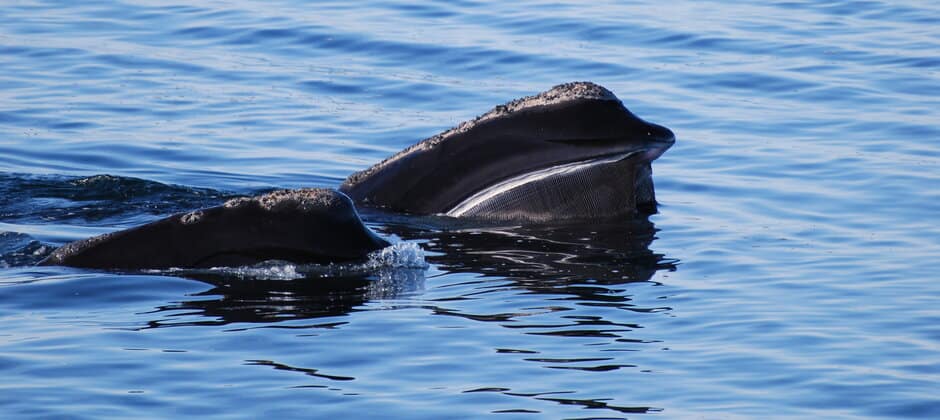Share this article
For many right whales, the right spot to summer is farther north
Over the last decade, researchers hadn’t been seeing as many North Atlantic right whales in their usual spots. For decades, survey efforts were focused on the waters around Maine and Nova Scotia—the Gulf of Maine, the Bay of Fundy and the Roseway Basin—but the whales weren’t showing up in the numbers they expected.
Biologists began to suspect the whales were changing where they summer, following prey distributions that were changing because of climate change. Visual surveys prompted teams to look farther north, to the Gulf of St. Lawrence, a stretch of water between Newfoundland and Quebec.
Despite a few sporadic sightings of the federally endangered right whales (Eubalaena glacialis) there, and a few carcasses of dead right whales that washed ashore, “right whale monitoring really wasn’t focused up there in the gulf,” said Leah Crowe, a field biologist for the Northeast Fisheries Science Center in Woods Hole, Massachusetts.
Between 2015 and 2019, teams from many organizations set out to find out how many right whales were summering there. They used aerial and ship survey methods, identifying individual whales based on natural and unnatural markings on their bodies as well as rough patches of tissue called callosities on the tops and sides of their heads. Using this information, researchers could identify life history information as well as seasonal distribution and movement patterns in the gulf.
Over the years, a pattern emerged. The same whales were returning year after year.
“It was pretty clear, even within a couple years of surveying up there, we were seeing the same ones as the last year,” said Crowe, lead author of a study published in Endangered Species Research. About 95% of the animals sighted in 2019 were return whales, she said. “They’re extremely loyal to this region.”
That has conservation implications, she said, because fishing boats and shipping lanes present risks to the whales, both in and on the way to the gulf. Precautions, like including more whale-friendly fishing methods and lower ship speeds, would help, Crowe said.
But not all right whales are coming to the Gulf of St. Lawrence. The gulf accounts for only a portion of the overall population. Where are the rest going?
“We think about 140 whales are using the gulf,” Crowe said. “We estimate the population is currently less than 350. That’s a huge chunk of animals that we don’t know where they are during the summer.” They may be in the open ocean, she said, but finding out is an important next step.
“There’s room to expand these surveys to get more precise estimates throughout the season,” she said. “We were only able to reveal these changes because of long-term monitoring.”
Header Image:
About 40% of North Atlantic right whales are spending their summers in the Gulf of St. Lawrence.
Credit: NOAA, under NOAA Fisheries Permit #633-1763-01








